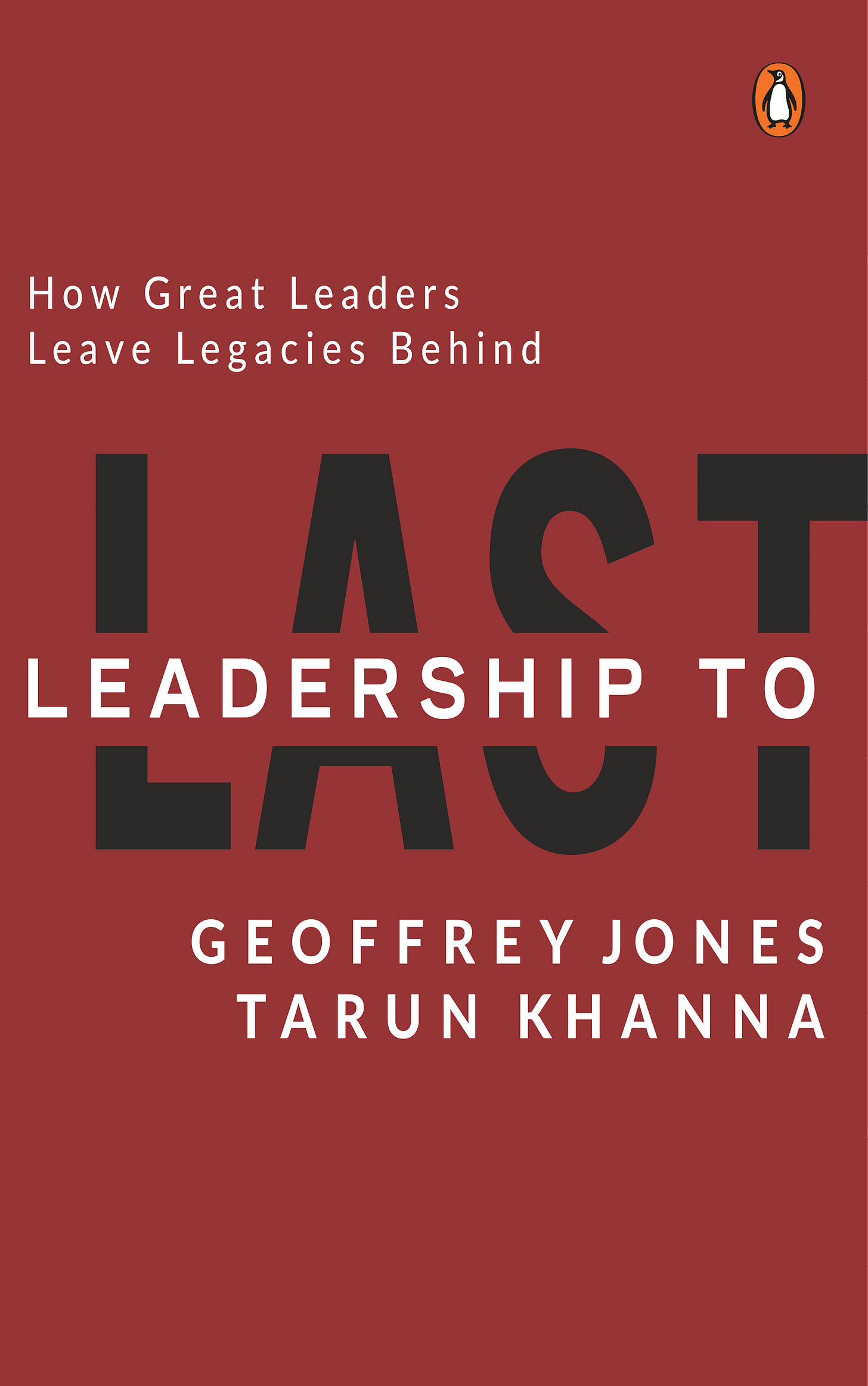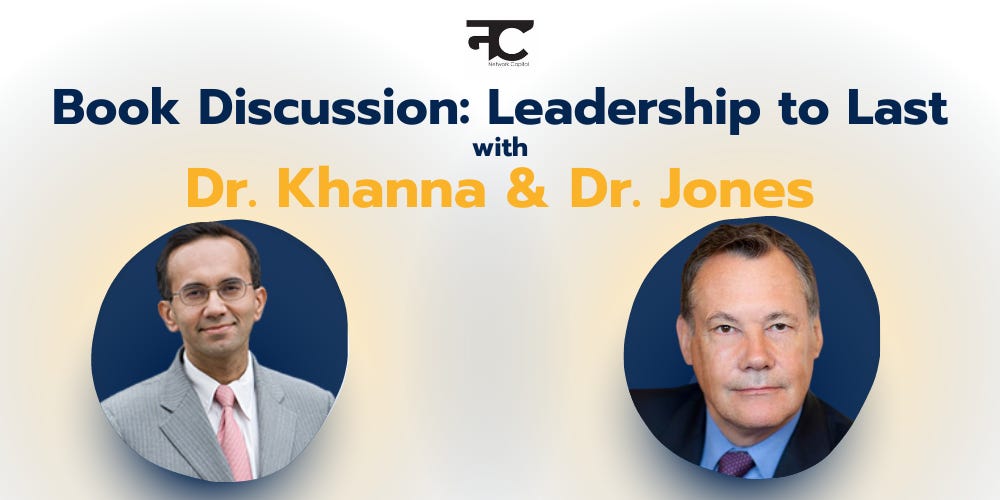Leadership to Last
Learning from my new book’s discussion of the life trajectories of truly iconic entrepreneurs
Dear readers,
I write this newsletter once every month or so. It features my reflections on the deployment of creativity to making the world’s economic systems (and by extension social and to some extent political systems) more inclusive and, therefore, fairer. That sounds like a tall order – and it is!
If you would like to get the updates directly in your inbox, do subscribe!
Leadership to Last
Leadership to Last is the title of a new book my colleague, the historian Geoff Jones, and I have just published with Penguin across South Asia. It features content from first-person, one-on-one conversations with iconic entrepreneurs across emerging markets, with a focus primarily on India and the rest of South Asia. The text is straight from the horses’ mouths as it were – fun discussions with accompanying free-to-access video clips of our interviews maintained on our Harvard Business School website. The protagonists – many of whom I’m privileged to call friends or mentors or both – have earned universal respect by changing the very contours of their societies, a tall order. They aren’t necessarily the richest in their countries, the measure of ‘success’ isn’t only material success and personal wealth, though that often comes with success, but ‘impact’ writ large. It turns out there are many ways to make an indelible mark that are worthy of introspection and celebration.
In this post, I will not delve specifically into the content of Leadership to Last – there’s going to be ample media and online discussion about that in weeks ahead – other than to point to amazing video for public use, such as this snippet of a fascinating conversation I had with the pediatric cardiac surgeon, Devi Shetty, founder of Narayana Health in India, provider of cutting-edge low-cost but commercially viable heart surgery at scale to the poorest.
Now, this is my fourth book on entrepreneurs in developing countries in a little over a decade. Through all these, the theme of creative ferment as the engine of social and economic development is constant, but the writing genres I adopt vary. This is unconventional. Usually one writes as a novelist, or an historian, or a playwright, or specializes in some genre. Thus, Paul Theroux is known for his travelogues, and Salman Rushdie for his magical realism, to quote two stalwart writers of whom I’m in awe. But, not for me this much traveled road. My departure from this time-tested specialization is intentional, for me the act of writing is mostly an act of continual clarification about the complex process of cultivating individual agency in developing countries, so that creativity and ferment are birthed. I always start with a broad sense of what I want to say in a book, and how I want to say it, but the journey takes me into unexpected interstices of my thought processes and consciousness.
Let me reflect here on how writing the previous books, and this current and another forthcoming one, taught me in different ways about entrepreneurship and economic and social development.
My first book about this theme was a first-person narration of a set of experiences in China and India over the decade prior to publishing Billions of Entrepreneurs in 2008. It’s probably the book I most enjoyed writing. What it brought home to me was the comparative aspect. On each of a range of issues, I compared and contrasted the experiences of entrepreneurs I met and worked with in each of two very different societies.
The second was a conceptual book, Winning in Emerging Markets, written with my colleague, Krishna Palepu, providing a set of frameworks and roadmaps to think about building an enterprise amidst the institutional weaknesses of developing countries. The third, Trust, zeroed in on one mechanism whose centricity to successful entrepreneurship I thought stood out amidst all the ways I had experienced, so I used the book to take stock of my learnings – again accumulated in first person – in the decade since Billions of Entrepreneurs but cast my net wider not just in China and India, but more widely across Africa and Latin America as well.
Leadership to Last departs from all these in its method. Rather than my direct reflections, we offer our take on how my friends and mentors made sense of their remarkable professional life trajectories. I loved editing the interview transcripts, and then, with Geoff Jone’s historical eye, adding reflective essays on particular themes that we felt deserved highlighting.
Watch out for my next book, Making Meritocracy also an edited collection of essays (with the social historian of imperial China, Michael Szonyi) written by some of the world’s leading philosophers, historians, political scientists, anthropologists, you name it – investigating the idea that underlying the catalysis of entrepreneurial ferment is a societal commitment to meritocracy. How have China and India embraced, or gotten in the way of, the idea of meritocracy as an organizing societal principle? So I’m back a third time – after Billions and after Trust – to comparing China and India, this time through the ages, from antiquity to contemporary times. Look for Making Meritocracy from Oxford University Press a few months from now.
PS. We are doing a book discussion for Leadership to Last on Feb 9, 2022. Join in!




